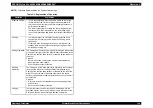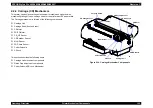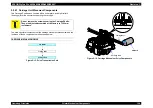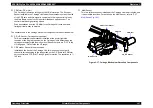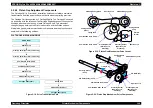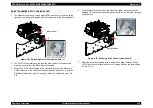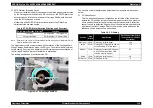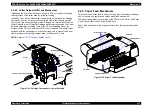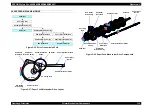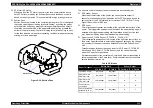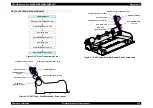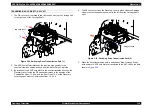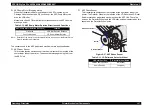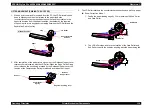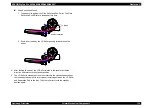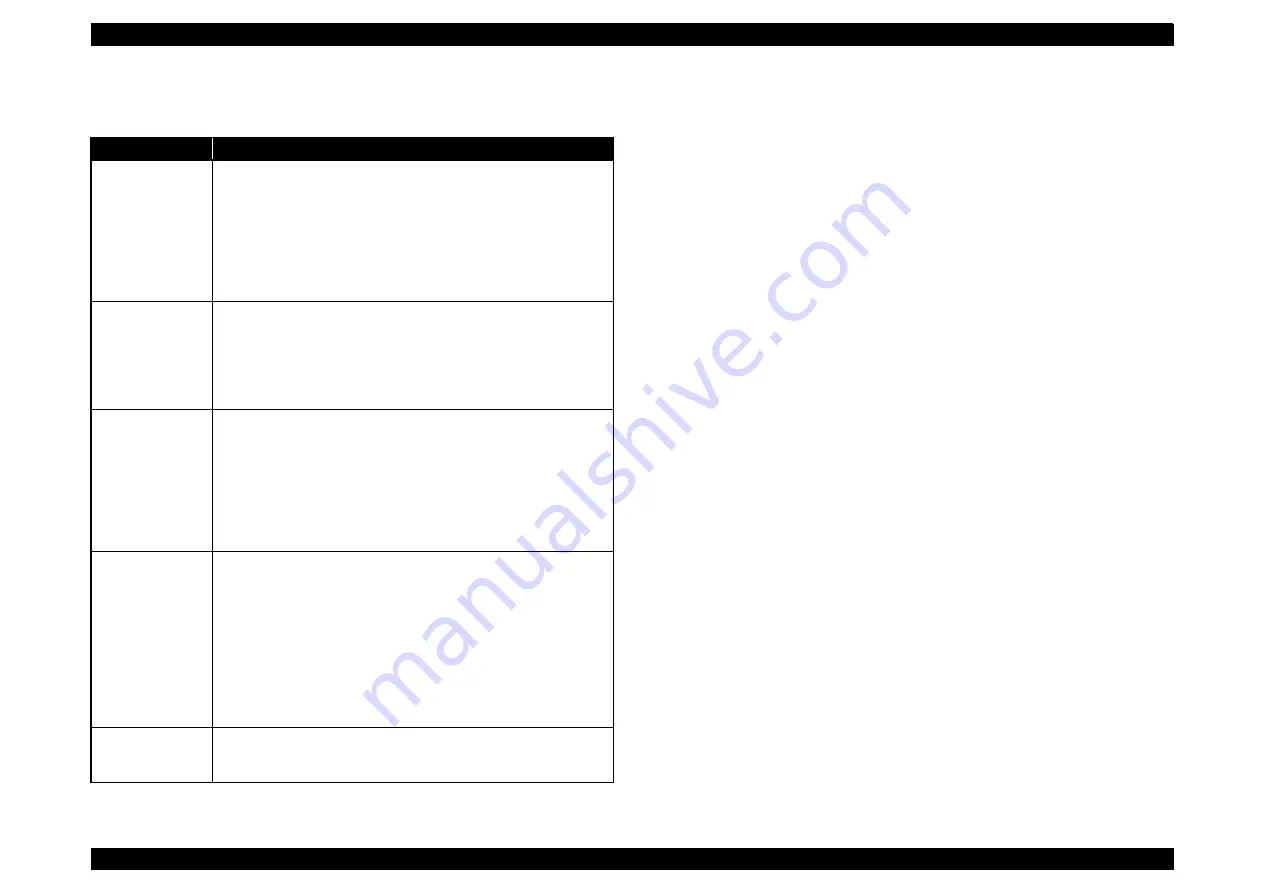
EPSON Stylus Pro 4400/4450/4800/4880/4880C
Revision C
Operating Principles
Printer Mechanism Components
124
NOTE: The table below explains Ink System terminology.
Table 2-6. Explanation of Operation
Operation
Explanation
Initial Ink Charge
• This is the operation where the head is filled with ink for the
first time. When the first ink cartridge is inserted (after all 8
colors have been inserted), the initial ink charge operation is
performed automatically.
• The initial charge flag is set when the printer is shipped from
the factory, then after this operation, the initial filling flag is
reset. The initial charge flag is also set after the "Input Rank" is
run.
Flushing
• In order to prevent the viscosity of the ink inside the head
nozzles from increasing, the ink inside the Flushing Box is
flushed out.
• Flushing is done when paper is set, when printing from the
standby state, during continuous printing, during paper Eject,
during paper cutting, etc.
Wiping Operation
The Carriage Unit is moved from right to left along the rubber side
of the wiper (the right half of the Wiper Blade) incorporated in the
Pump Unit so that the head surface is rubbed with the rubber of
the wiper.
Purpose:
• Before ink suction, removes the ink and other substances
adhering to the head surface.
• Ensures close contact of the cap.
Rubbing
Operation
The Carriage Unit is moved from left to right along the felt side of
the wiper (the left half of the Wiper Plate) incorporated in the
Pump Unit so that the head surface is rubbed with the felt of the
wiper. For easy removal of adhering substances, the nozzle
surface is wetted before rubbing operation by suction of a small
amount of ink.
Purpose:
• Removes ink and other substances adhering strongly to the
head surface.
• Ensures close contact of the cap.
Capping
In order to prevent the ink viscosity from increasing while the
printhead nozzles are not used, a rubber cap is placed over the
Print Head nozzles when entering a shutdown operation.
Summary of Contents for Stylus Pro 4800 Portrait Edition
Page 9: ...C H A P T E R 1 PRODUCTDESCRIPTION ...
Page 113: ...C H A P T E R 2 OPERATINGPRINCIPLES ...
Page 156: ...C H A P T E R 3 TROUBLESHOOTING ...
Page 200: ...C H A P T E R 4 DISASSEMBLY ASSEMBLY ...
Page 366: ...C H A P T E R 5 ADJUSTMENT ...
Page 448: ...C H A P T E R 6 MAINTENANCE ...
Page 457: ...C H A P T E R 7 APPENDIX ...















